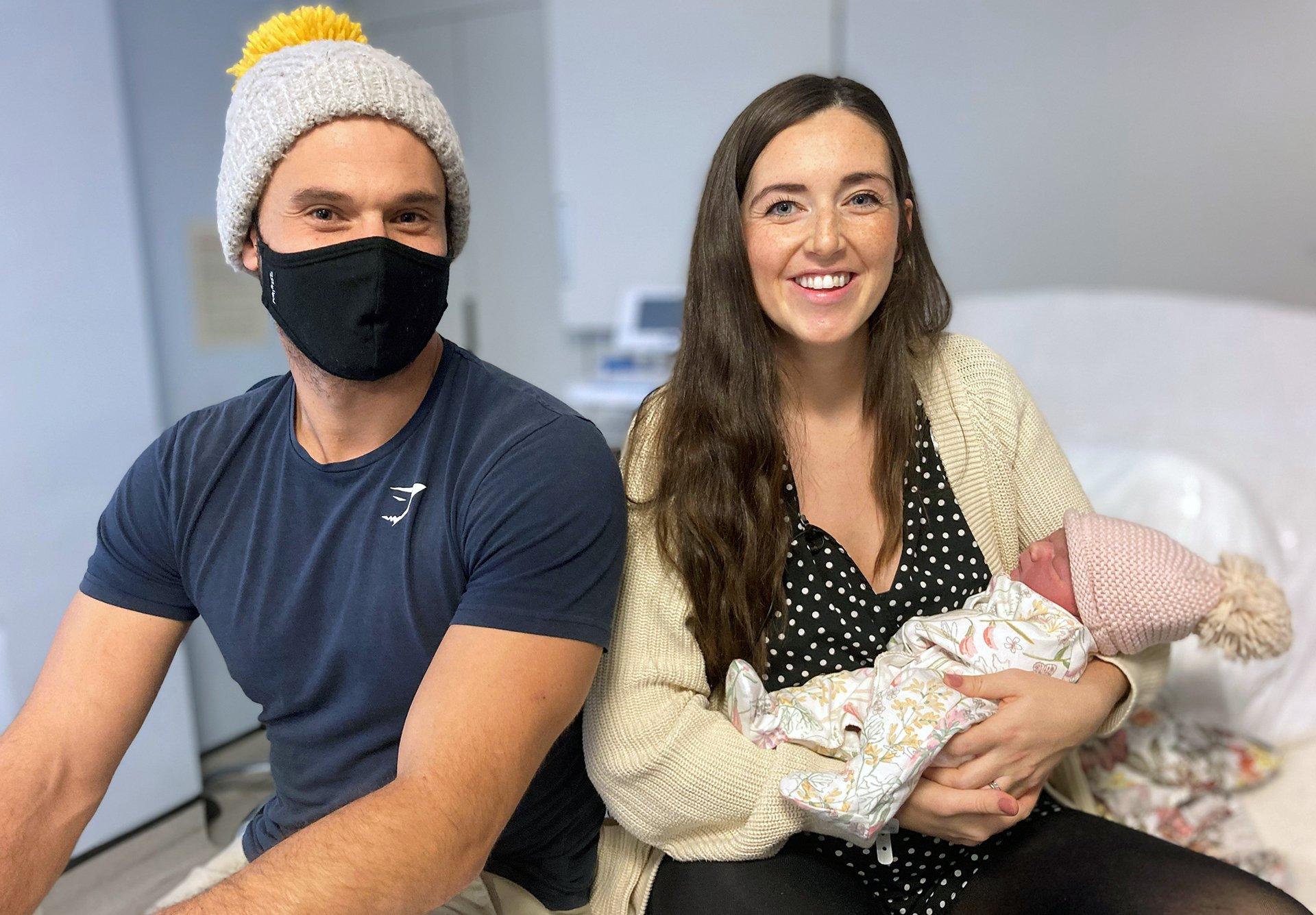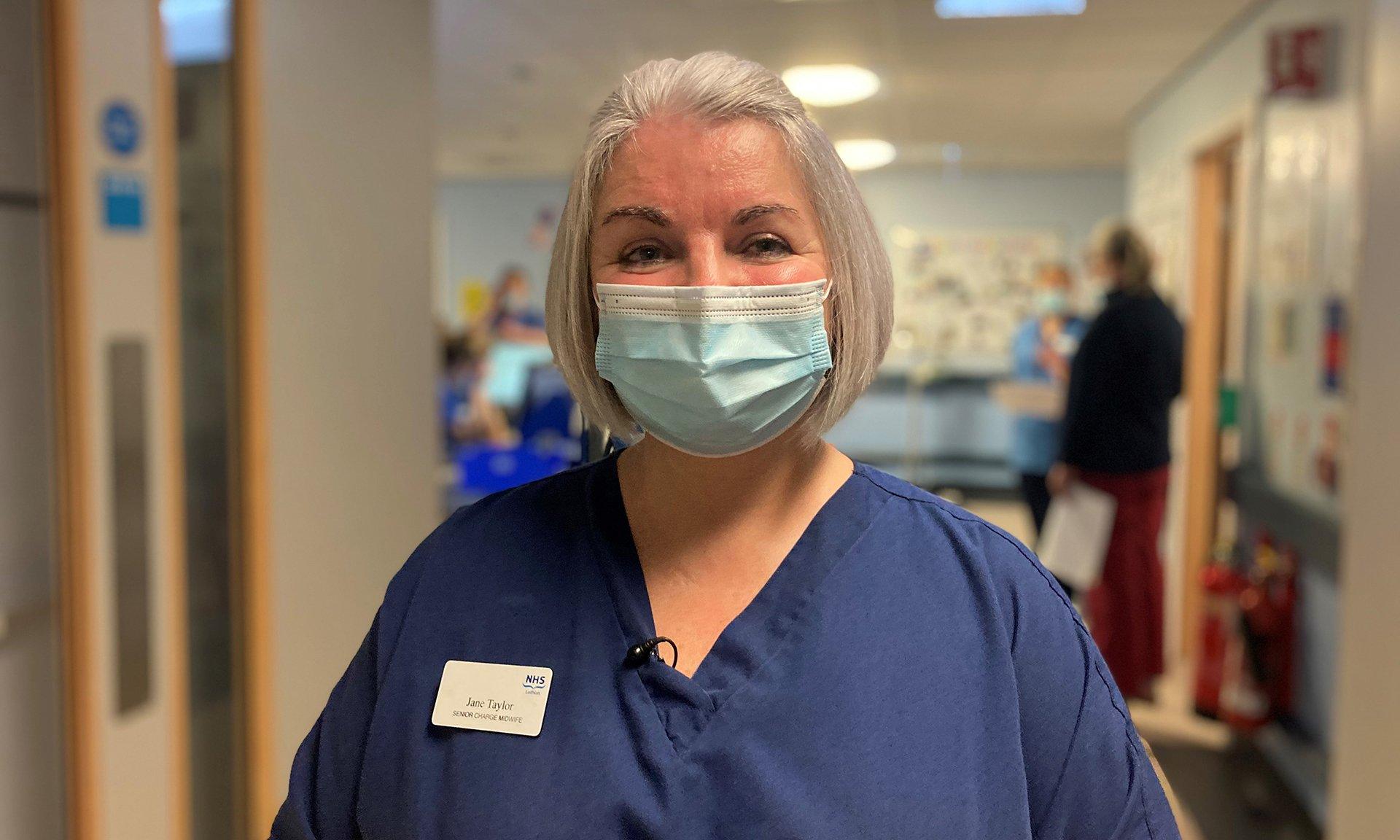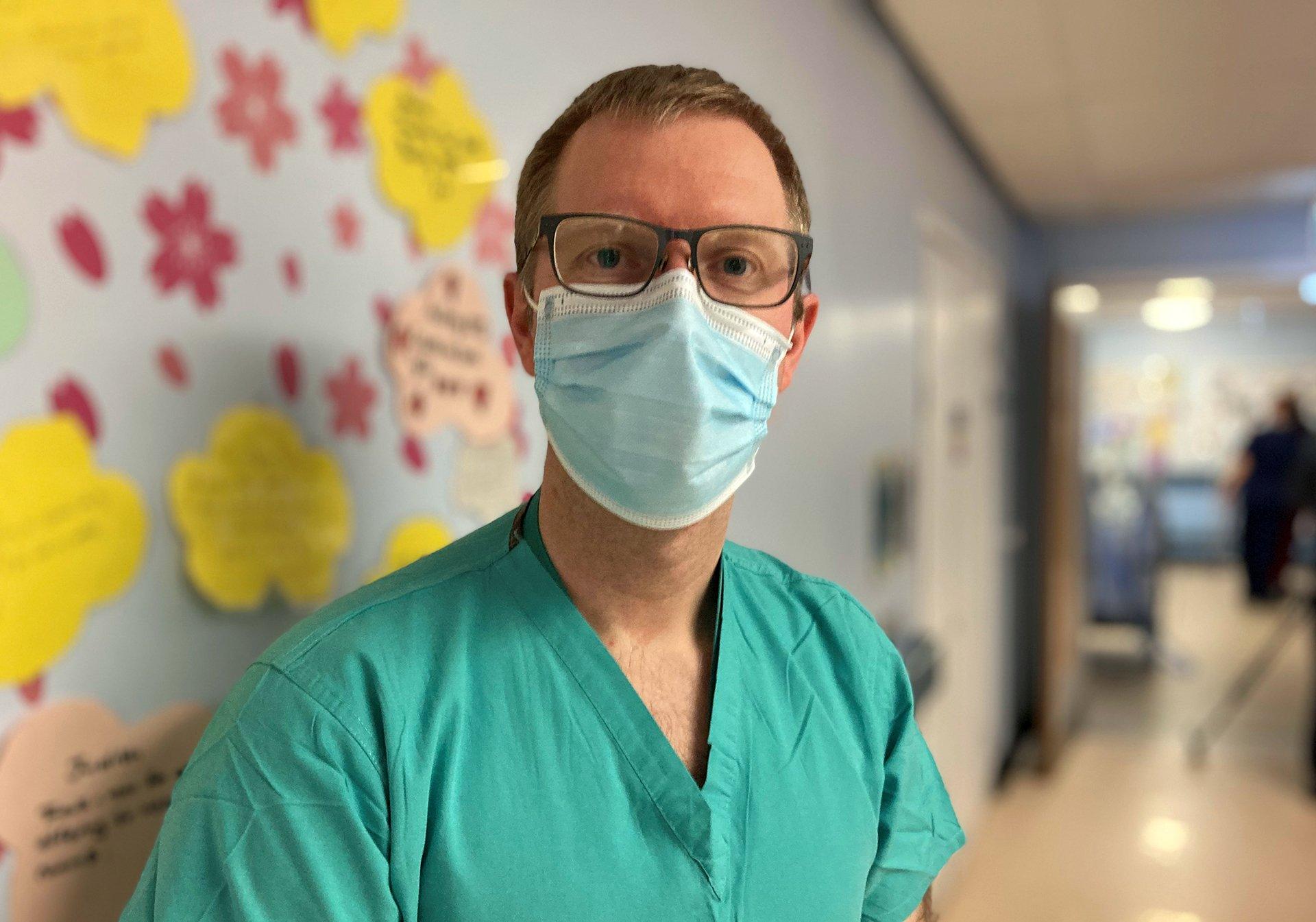Baby steps to cutting NHS Scotland's carbon footprint
- Published

Sinead and Robbie Lavery say they are a "climate conscious" family
On the day the Scottish government published its strategy for a net-zero NHS by 2040, external, baby Airlie Autumn Lavery was taking her first breaths in the labour ward of St John's hospital in Livingston.
Her mum, Sinead, used gas and air for pain relief in the birthing pool. But she was unaware of the small contribution she was making to the fight against climate change.
The Entonox she was breathing in contains nitrous oxide - a greenhouse gas which lasts around 100 years in the atmosphere, and whose global warming potential is around 300 times greater than carbon dioxide.
But midwives in NHS Lothian are using a new machine, developed in Sweden, to destroy the nitrous oxide and convert it back into harmless gases.
As they welcomed their fourth child into the world, 30-year-old Sinead and her husband Robbie, 32, were none the wiser.

Little Airlie Autumn Lavery was born at St John's hospital in Livingston.
"We are pretty climate conscious as a family so to have that knowledge of it, after the fact, is really great," says Robbie, from Symington in Lanarkshire.
"I think it is a great initiative and the more stuff like this, the better it is going to be for the climate - and the kids."
Gas and air is the most popular type of pain relief in childbirth, but senior charge midwife Jane Taylor says most people don't realise the harm it does.
"Over 70% of our women use Entonox during their labour at some point, so that is a huge carbon footprint that has a huge impact on the climate.
"When women are in labour we don't expect them to be worrying about climate change. So if we can do something to reduce that behind the scenes we are happy to do that"
This maternity unit is the only one in Scotland, and the second in the UK, to trial the technology. The hope is that it will be more widely used in future.

Midwife Jane Taylor says most people don't realise the environmental harm that gas and air does
Anaesthetic gases released into the atmosphere account for around 5% of the carbon footprint of NHS acute hospitals. The biggest contributor is Entonox - but gases used to keep patients asleep during surgery are also highly damaging to the atmosphere.
NHS Lothian consultant anaesthetist Dr Andrew Goddard says they've worked hard to reduce the use of these harmful gases in the operating theatre, by using different kinds of gases or using a lower flow through the anaesthetic machine. But that has a limited impact.
"Almost everything we put into the patient has to be exhaled and dealt with at the end of the procedure," he says.
"You can think of an hour's worth of general anaesthetic compared to the number of miles driven in the car, by calculating the equivalent quantity of carbon dioxide emitted."
"An hour's worth of an anaesthetic is in the region of driving 100, 200 or 300 miles in a car."

Dr Andrew Goddard says the NHS has worked hard to reduce the use of harmful gases in the operating theatre
Current practice is to pump the waste gases out of the hospital and release them into the atmosphere. But in St John's four operating theatres, another innovation is being used to reduce those emissions.
Dr Goddard explains the new system captures the excess gases and stops them from escaping.
"The pipe goes into a little canister on the side of the machine and the gases are collected there and held there. When the canister is full an alarm goes off and the team can change the canister very easily in a matter of seconds."
This team is the only one in the UK currently using this technology and the first in the UK to use this particular device. Dr Goddard says it has the potential to cut the demand for anaesthetic gases too, further reducing their carbon footprint.
"The captured anaesthetic gases can be extracted centrally and purified, and after various approvals can be potentially re-used, so not only are we reducing the amounts being put up into the atmosphere, we're also reducing the requirement for new gases to be manufactured as well."
"5% is a massive amount so if that's an area we can tackle and reduce the impact it will make a very big difference to the emissions of the NHS overall".